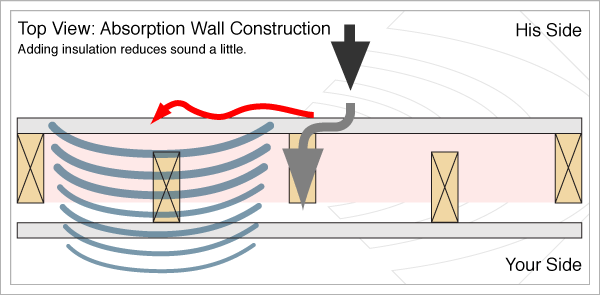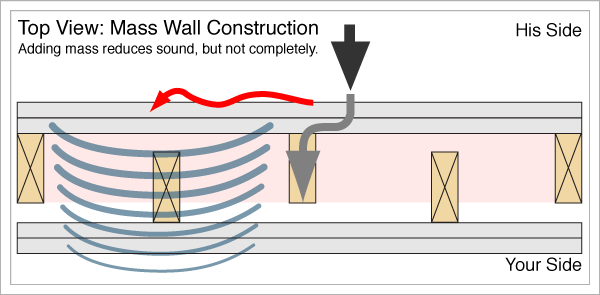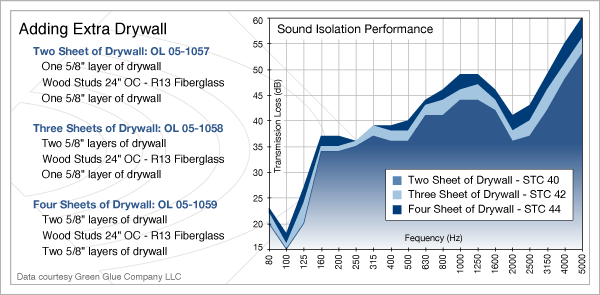Soundproofing and Construction, Part 2:
Sound Absorption & Mass
2. Sound Absorption, Sound Vibration
Hollow air cavities will resonate noise. You’ve “heard" the ocean in a seashell and you’ve also blown across the top of a bottle and heard the deep whistle. Both sounds are actually the trapped air resonating. Your hollow wall will also trap air that resonates. When your neighbor vibrates his side of the wall, the air in the wall cavity is also vibrated, just like a drum. This air cavity is clearly another method for sound vibration to travel from one side of the wall to the other and requires soundproofing.

Even though the wall framing is decoupled, the vibrating air cavity will still transmit sound through the wall between the studs. Simple fiberglass insulation will absorb some of this noise (absorption).
Insulation helps to a degree for soundproofing, and should be done if possible. The sound vibration reduction is smaller than the other three elements we use. Don't compress or pack the insulation, otherwise it will actually start conducting sound vibrations and an amount of soundproofing will be lost.
So now we have a de-coupled and insulated wall framing to help stop the noise problem. These elements stop a lot of sound vibration, but not all. We move on to more elements to achieve better levels of soundproofing.
3. Adding Mass
Mass is a very important element in soundproofing. We simply want to make the walls or ceiling as heavy as possible. It’s harder for sound to move something heavy. Examples of heavy materials include Drywall, Plywood, OSB, and Cement Board.
For sound to conduct through a wall, it has to actually move the wall a teeny bit. A heavy wall is harder to move than a lighter wall. Drywall is one of the lowest cost sources of mass available. Use thicker, heavier drywall like 5/8”. It is very important to note that a heavy wall will still vibrate from sound, however not as easily.

Adding mass improves the soundproofing level achieved since it's harder for sound to move a heavier wall. You will still hear the low bass generally.

This graph illustrates the improvements in soundproofing gained from adding additional drywall. This addition of mass obviously helps the sound vibration, but it doesn't help as much as we need.
So far we have a wall that is de-coupled, has some insulation for absorption, and is heavy. This stops a lot of sound vibration but still not all. Is there anything else we can do to reduce sound vibration and increase soundproofing?
Click on Soundproofing to continue.






